Last updated on 2025-09-10
A review and sample photos of the Leica S typ007 digital camera with a CONTAX 645 lens and other lenses.
- Please see the disclaimer regarding advertising here.
- Italicized links in the text are advertisement links that take you to other sites.
Table of contents
- Gallery
- Review
- Specification
- Options
- History of medium-format digital cameras (memorandum)
- Reference links
- Affiliate links
Gallery
Review
1.Overview
The LEICA S Typ007 is a digital SLR camera with a 45mm x 30mm medium format digital sensor released in 2015.
The sensor resolution is 37.5 megapixels, and the flange back is 53mm.
There are 10 types of Leica S lenses, some of which have a shutter on the lens side. Lenses with a shutter are called central shutter (CS).
Because the flange back is short for a medium format digital camera, mount adapters for the HASSELBLAD HC lens, CONTAX 645 lens, HASSELBLAD-V lens, MAMIYA645 lens, and PENTAX67 lens are officially sold by Leica. The PENTAX 645 adapter is not officially sold, but I have seen an adapter made by a 3D printer being sold.
In addition to the standard normal screen, grid screens and microprism screens are also available as focusing screens.
The first generation KODAK sensor cameras, the S2, S typ006, and S-E typ006, have the same sensor coating peeling problem as the LEICA M9, making them difficult to put into practical use.
The LEICA S3 was the last Leica SLR, and there were few units sold, so there is also a low supply of second-hand models.
As a result, the LEICA S Typ007 was relatively easy to obtain for a time, as people who were selling their S3s were selling them.
2.Usability
The impression when holding the body is the same as the S-E/S2, but since it was released in 2015, the shooting functions have been brushed up accordingly.
In particular, the change to a CMOS sensor means that sensor sensitivity is practical up to ISO 6400, which is a very welcome evolution for SLR cameras that want to ensure a certain shutter speed when handheld.
The maximum shutter speed remains the same, but bulb shooting differs depending on the model, with the S typ007 having the shortest shutter speed of 60 seconds, which has been extended to ISO 100/125 seconds like the S2 with firmware 5.0.0. The maximum shutter speed for the S2 is 125 seconds at ISO 100, and for the S3 it has been extended to 8 minutes.
In terms of design, the S typ007/S3 no longer have the GPS protrusion on the right shoulder of the S-E/S typ006, and have a design similar to the S2, which is a good change. I thought the plastic cover on the right shoulder of the S typ007/S3 was a sub LCD display, but it only looked that way because the material was changed to allow radio waves to pass through.
Like the design on the right shoulder of the S-E/S typ006, Leica products often have designs that neglect appearances and are only practical, which is unfortunate considering the price of the product, but this may be because we are used to Japanese product designs that are cheap and completely changed.
I was given two screens for the S typ007 I got second-hand, a normal screen and a lattice screen, so when I used the lattice screen, it was obviously easier to decide the composition than with the normal screen.
The optical viewfinder of the S has not changed fundamentally, and although it depends on the photographer’s eyesight and lens, I feel that it is relatively easy to determine the focus peak in bright places, but it is quite hopeless in dark places, and if you are not careful when shooting, you will definitely miss the focus peak, and you may have to cheat by shooting with the focus position slightly shifted.
It’s likely that it won’t be useful in dark places, but when using MF, I wish it had taken advantage of the large body and had a built-in magnifier. The only way to deal with the focus problem is to use the camera a lot, understand the viewfinder’s quirks, and learn how to adjust it yourself, but with my deteriorating eyesight, this is quite difficult.
Since I use a handheld camera that weighs about 2kg including the lens (leaving aside the question of whether it is appropriate to use this camera handheld), I feel that the superiority of mirrorless cameras in photography is unshakable, as handheld shooting at slow shutter speeds results in low yields due to blurring caused by mirror shock, noise caused by the mirror movement during shooting, and the focus accuracy of the optical viewfinder depends on the photographer’s skill.
In addition to the above, in terms of price, if you want to play around with mounts using medium format lenses, you’ll probably be much happier with the FUJIFILM GFX. However, the LEICA S is the only SLR camera that allows you to see through the lens and shoot with medium-format lenses from various companies on a sensor larger than a 35mm sensor. The decline of SLR cameras is not stopping, and if LEICA continues with this 45mmx30mm pro format, it will be inevitable to become mirrorless. Therefore, it is thought that the history of SLR cameras following the LEICA R will end with the S typ007 and S3, so it is best to enjoy them while you can.
The Leica S2/S typ006 (S-E) is the first generation of Leica medium-format digital cameras, and as I have written on another page, I bought two of them, but both of them suffered from deterioration of the sensor coating. There seem to be some strong people who use them after peeling off the sensor coating, but I didn’t want to go that far, so I returned both of them.
The Leica S typ007 has a CMOS sensor, and the system inside the body shows progress over the years.
As of 2023, the price of the S typ007 can be purchased second-hand at the same price as the LEICA SL2 compared to the LEICA S3. The problem is that there are not many available.
I saw it on M-Cali while I was looking for one, so I registered as a new member and purchased it, but the seller was forced to cancel the order, which was a nuisance for the seller, perhaps because they were wary of someone with no transaction history purchasing a high-priced item. I was told that it would be listed on Yahoo! Auctions, so it came to my house via that.
3.Summary
In conclusion, to sum up the LEICA S Typ007, it is the second generation camera of Leica’s last SLR camera S series.
Because it has been changed to a CMOS sensor, it is a relatively stable camera that can use live view.
Specification
SLR camera with medium format digital sensor. The sensor manufacturer is unknown; it is only labeled LEICA CMOS Image sensor. Since there are only a few companies that can design a sensor of this size, it is likely to be either ams-OSRAM AG (CMOSIS) or SONY.
As the name “reflex” implies, the camera is equipped with a mirror in front of the shutter release.
I thought the transparent part on the left shoulder was a display, but it is just plastic to let GPS signals through.
A lens shutter can be used, and Leica S CS-type lenses and Hasselblad H lenses can use the shutter on the lens side. However, since the camera is equipped with a mirror, the mirror is always turned up when shooting, so when shooting hand-held, the benefit of the lens shutter to reduce blurring is almost nonexistent.
When using a tripod for still-life photography, it may be practical to press the shutter once to raise the mirror and then release the shutter.
| Items | S2 | S/S-E(Typ006) | S(Typ007) | S3 | |
| Effective Pixels | 3750 | 3750 | 3750 | 6400 | |
| Sensor Type | CCD (KODAK) KAF-37500 | CCD (KODAK) KAF-37500 | CMOS (LEICA) Unknown | CMOS (LEICA) Unknown | |
| Recored media | CF/SDHC | CF/SDXC | CF/SDXC | CF/SDXC | |
| Weight(g) | 1410 | 1260 | 1260 | 1260 | |
| Release date | 2009/10 | 2012/2014 | 2015 | 2018 |
LEICA S Typ007 maximum exposure time
| ISO | MAX Time |
| 100 | 125 |
| 200 | 90 |
| 400 | 45 |
| 800 | 24 |
| 1600 | 12 |
| 3200 | 9 |
| 6400 | 4 |
| 12800 | 2 |
LEICA S lenes
The Leica S lenses have been released with eight single focal length lenses from 24mm to 180mm, one zoom lens, and one tilt-shift lens The S series appears to be almost sold out as of 2023, and no new lenses are expected to be added.
| Lens name | F number | Shutter |
| SUPER ELMAR-S 24mm | F3.5 | None |
| ELMARIT-S 30mm | F2.8 | Equipment/None |
| SUMMARIT-S 35mm | F2.5 | Equipment/None |
| ELMARIT-S 45mm | F2.8 | Equipment/None |
| SUMMARIT-S 70mm | F2.5 | Equipment/None |
| SUMMICRON-S 100mm | F2 | None |
| APO MACRO SUMMARIT-S 120mm | F2.5 | Equipment/None |
| TS APO ELMAR S 120mm | F5.6 | None |
| APO ELMAR S 180mm | F3.5 | Equipment/None |
| VARIO ELMAR S 30-90 | 3.5-5.6 | None |
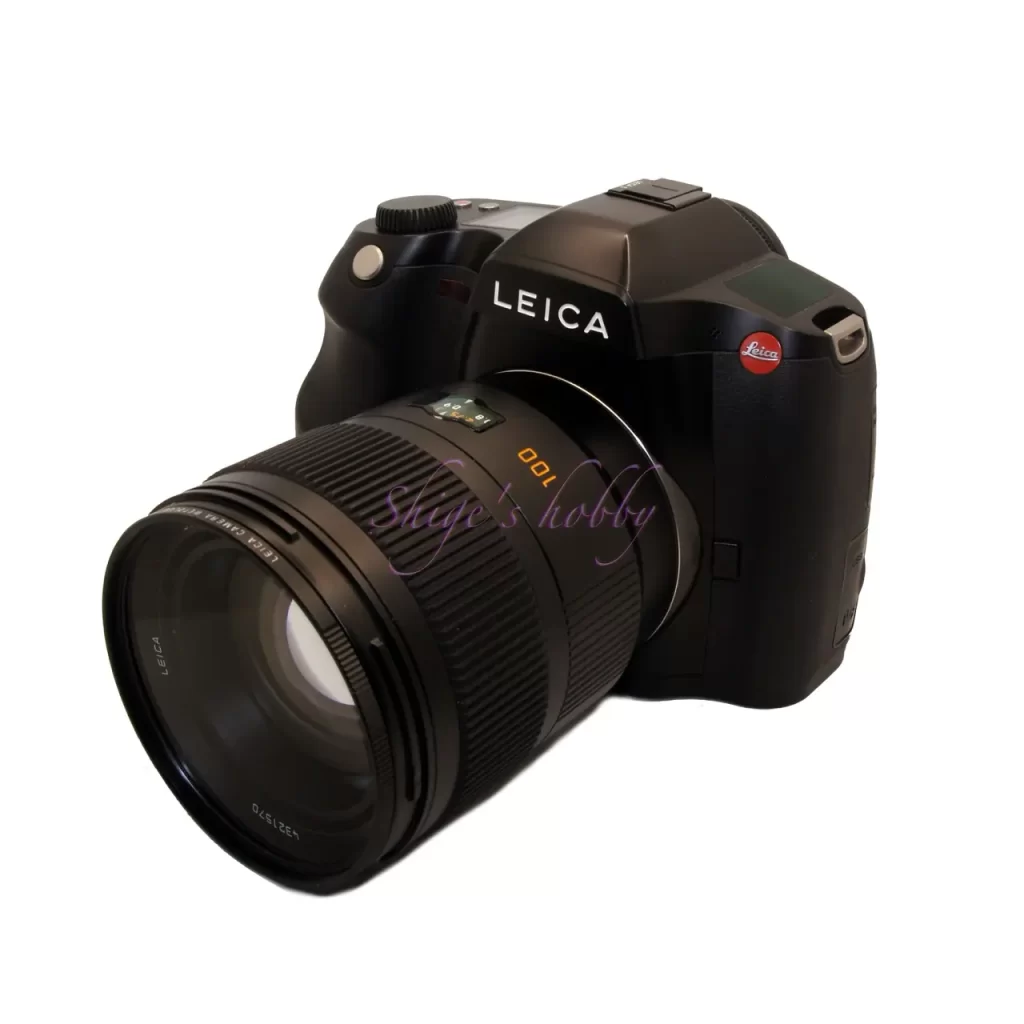
S-H Mount adater
I’ve posted the results of using an H lens I have via an S-H mount adapter.
The HCD24mm is not on the compatibility list, but I was able to use it normally. However, it seems that the aperture and lens information is not transmitted, so it is not possible to narrow down the range and there is no record in Exif.
The HC35mm is a FUJIFILM brand, but it worked without any problems.
With the HASSELBLAD X series, only new lenses called orange dots can be used for AF, but the LEICA-S typ007 can be used for AF even with old H lenses when using an S-H mount adapter.
I was surprised that the HC120mmII can also be used for AF, which does not work with anything other than MF on the X series.
As shown in the compatibility list, if you use the Extension Tube H or Teleconverter H x1.7, the lens cannot be authenticated and does not work properly. It’s a bit unfortunate that the expandability of the system is spoiled.
The adapter’s list price is 207,000 yen excluding tax.
Hasselblad H lens flange focal distance = 61.63mm
LEICA S H lens mount adapter thickness = 8.63mm
| Lens name | AF | Shutter | Firmware | Frequency of use |
| HCD24mm | ○*1 | ○*1 | 19.1 | △ |
| HCD28mm | ○ | ○ | 19.1 | △ |
| HCD 35-90mm | ○ | ○ | 19.1 | ○ |
| HC35mm(Fuji version) | ○ | ○ | 9.0 | ○ |
| HC50mm-II | ○ | ○ | 19.1 | ○ |
| HC 50-110mm | △ | △ | 10.0 | × |
| HC80mm | ○ | ○ | 10.0 | ○ |
| HC100mm | ○ | ○ | 19.1 | ○ |
| HC120mm Macro-II | ○ | ○ | 19.1 | ○ |
| HC150mm | ○ | ○ | 10.0 | ○ |
| HC210mm | △ | △ | 12.0 | × |
| HC300mm | ○ | ○ | 19.1 | ○ |
Among the lenses I had on hand, the HC 50-110mm and the HC210 with the triangle symbol were immobile in AF and did not recognize the lens. I wondered if there was a problem with the lens, but I found the following note on the National photo web site: “Three items seem to apply, but after checking the firmware, it is not that old, so I think the AF motor in the lens may be dead.
I was thinking of sending my Hassel lenses to Hasselblad Japan for inspection, but I heard that the store in Harajuku will be closed on May 13, 2023, and that support in Japan will be provided through the distributor, so I am a little worried about the future.
- Personal use frequency latest camera body firmware upgrade required.
- The Hasselblad Tilt-Shift Adapter HTS 1.5 cannot be used.
- May not work or be recognized by Hassel HC lenses with older firmware.
- FUJIFILM GX645 lenses are not supported. There is a possibility of malfunction or non-recognition.
- We judge that the rangefinder eye-measuring is designed to be misaligned.
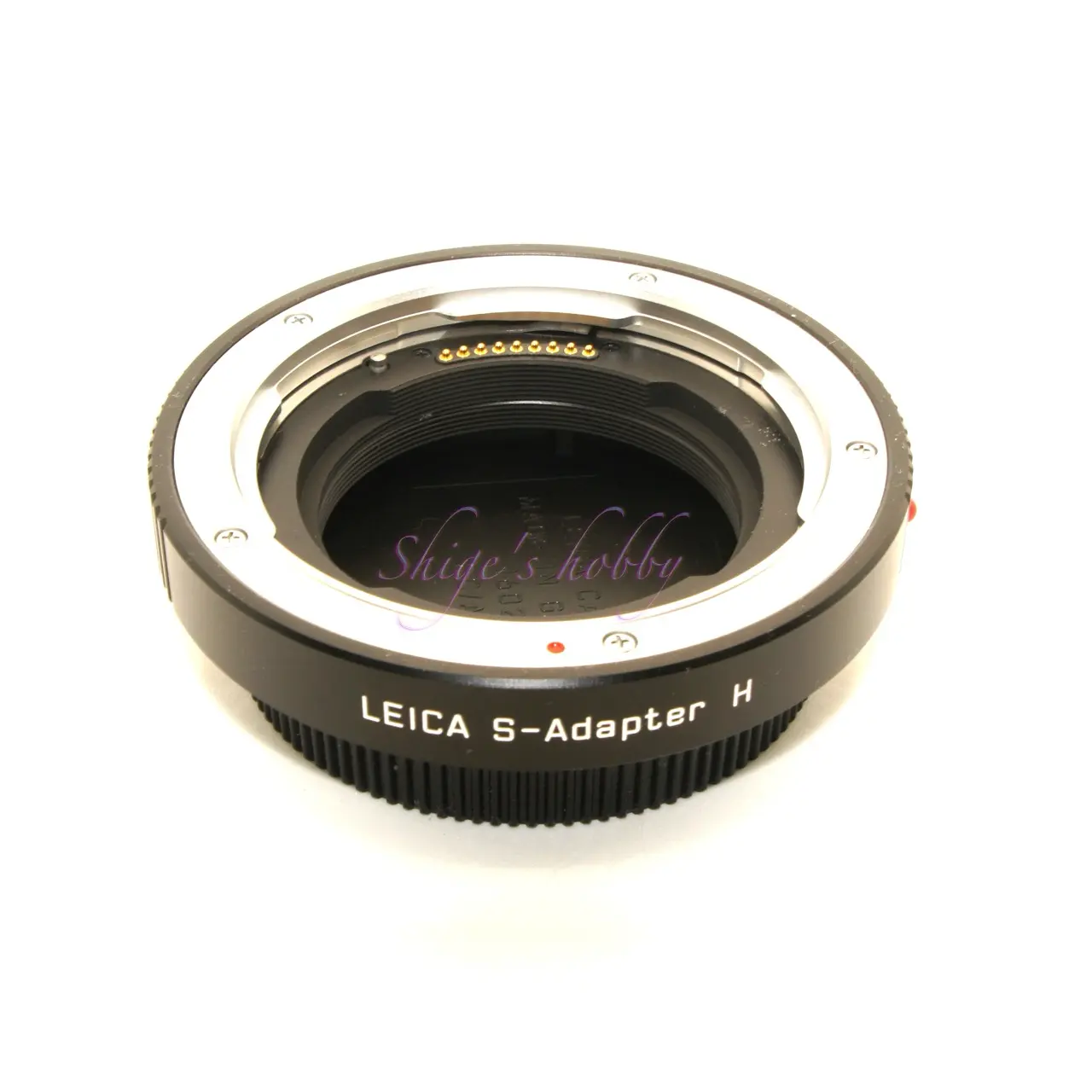
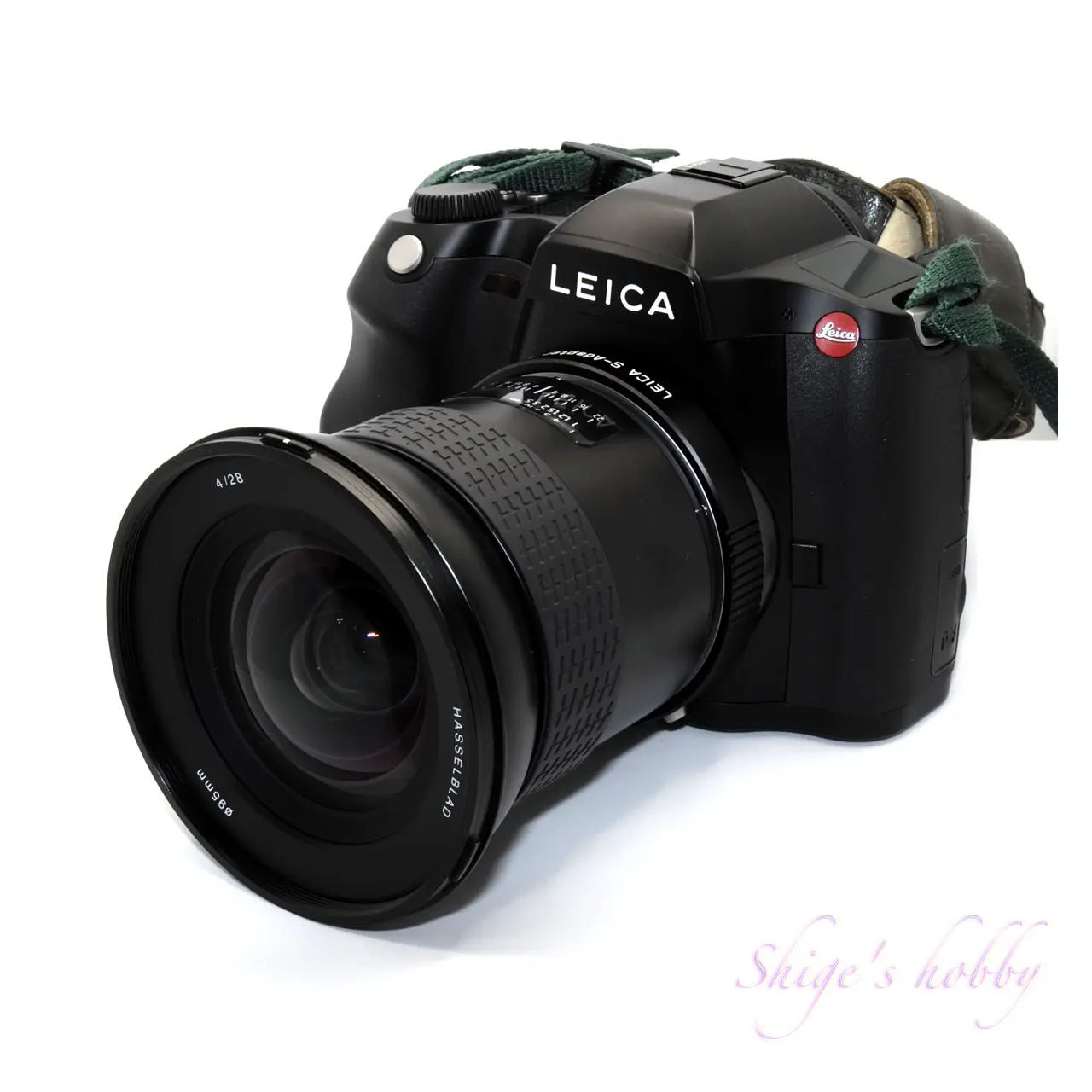
S- Adapter C645
I used the S-Adapter C645 with my CONTAX 645 lens and got the results below.
Although it is not a system that requires rapid shooting, when using a CONTAX 645 lens via the C645 adapter, it takes a beat or two before AF starts. It seems that a little time is required for communication between the lens and the body. An H lens used via an S-H adapter has a faster initial response.
The lens has an aperture ring, but the LEICA S camera cannot recognize the position of the lens aperture ring, so the aperture value is set using the dial on the camera. It is unfortunate that the physical indicator cannot be used, but this is not a problem as it can be adjusted on the camera like other lenses.
I used the P/A/M shooting modes on the LEICA S and had no particular problems.
When the Apo-Makro-Planar 120mm is set to AFs on the camera, the shutter will not be released unless the focus mark appears. If you switch the camera’s focus to MF, the shutter will be released even if the focus is off, so if you have two lenses, the AMP120mm and another AF lens, you have to switch the focus when changing lenses, which can be a bit of a hassle.
The adapter’s list price is 240,000 yen (excluding tax).
There are nine CONTAX 645 lenses and one teleconverter, but Kyocera ended its camera business in 2005 and support in 2015, so the product is no longer available and the lenses are less available.
I was able to get the 45mm/120mm/140mm/210mm/Mutar x1.4, which are relatively easy to obtain.
One of the advantages of using the C645 adapter is that you can use teleconverters and extension tubes.
I’ve added the lens list price (excluding tax) to the reference information in the table below.
As of 2023, the used prices of the 55mm and 80mm are over the list price and seem overvalued, while the wide-angle 45mm and the telephoto 120/140/210 seem cheap in comparison.
If I can get my hands on one, I’d like to try the Tele Apo Tessar 350mm. As of 2023, it is sold on eBay and second-hand for around 400,000 yen.
Although the teleconverter Mutar can only be used with a limited number of lenses, there seems to be a large number of them on the domestic market, so they can be purchased quite cheaply. The SONNAR 140mm has a spec of 200mm/F4 with the Mutar attached, so it doesn’t seem to make much sense considering the low price of the SONNAR 210mm, but when you attach it to the SONNAR 210mm, it becomes just under 300mm, which is not a bad choice considering the size and price of the Tele Apo Tessar, as you can get a good product for around 60,000 to 70,000 yen even if you add the two together. Another advantage is that you can still use the short minimum shooting distance of 210mm.
As of 2023, the Distagon 35mm has started to appear on the market, but I put it on hold because it overlaps with the HC35mm (I’m interested in comparing the two, but I’m satisfied with the HC35mm because it’s highly refined). However, I got it cheap, so I tried using it, and although it’s compact and the image quality is fine, it still overlaps with other 35mm, so I got rid of it.
The Vario Sonnar 45-90 was relatively expensive, so I put it on hold, but I found it at a reasonable price, so I bought it. It’s a lens that I use quite frequently, and although the zoom range is narrow at 2x 45-90mm, I feel the convenience of a zoom lens.
The lens flange back of the CONTAX 645 is (Flange focal distance) = 64mm
The mount adapter for the LEICA S is 11mm thick.
| Lens name | Foucs | Filter | Hood | Availability | Reference links |
| Distagon 35mm F3.5 | AF | 95mm | GB-101 | Get | ¥287,000- |
| Distagon 45mm F2.8 | AF | 72mm | GB-71 | Get | ¥250,000- |
| Distagon 55mm F3.5 | AF | 72mm | GB-72 | High price | ¥150,000- |
| Planar 80mm F2 | AF | 72mm | GB-72 | High price | ¥177,000- |
| Apo Makro Planar 120mm | MF | 72mm | GB-73 | Get | ¥270,000- ZEISSレンズとかなんとか |
| Sonnar 140mm F2.8 | AF | 72mm | GB-73 | Get | ¥245,000- |
| Sonnar 210mm F4 | AF | 72mm | GB-74 | Get | ¥250,000- |
| Apo Tessar 350 F4 | AF | 95mm | GB-102 | High price | ¥670,000- ナニワ / 鑑真カメラ |
| Vario Sonnar 45-90 F4.5 | AF | 95mm | GB-104 | Get | ¥379,000- |
| Mutar x1.4 | AF | – | Get | ¥120,000- |
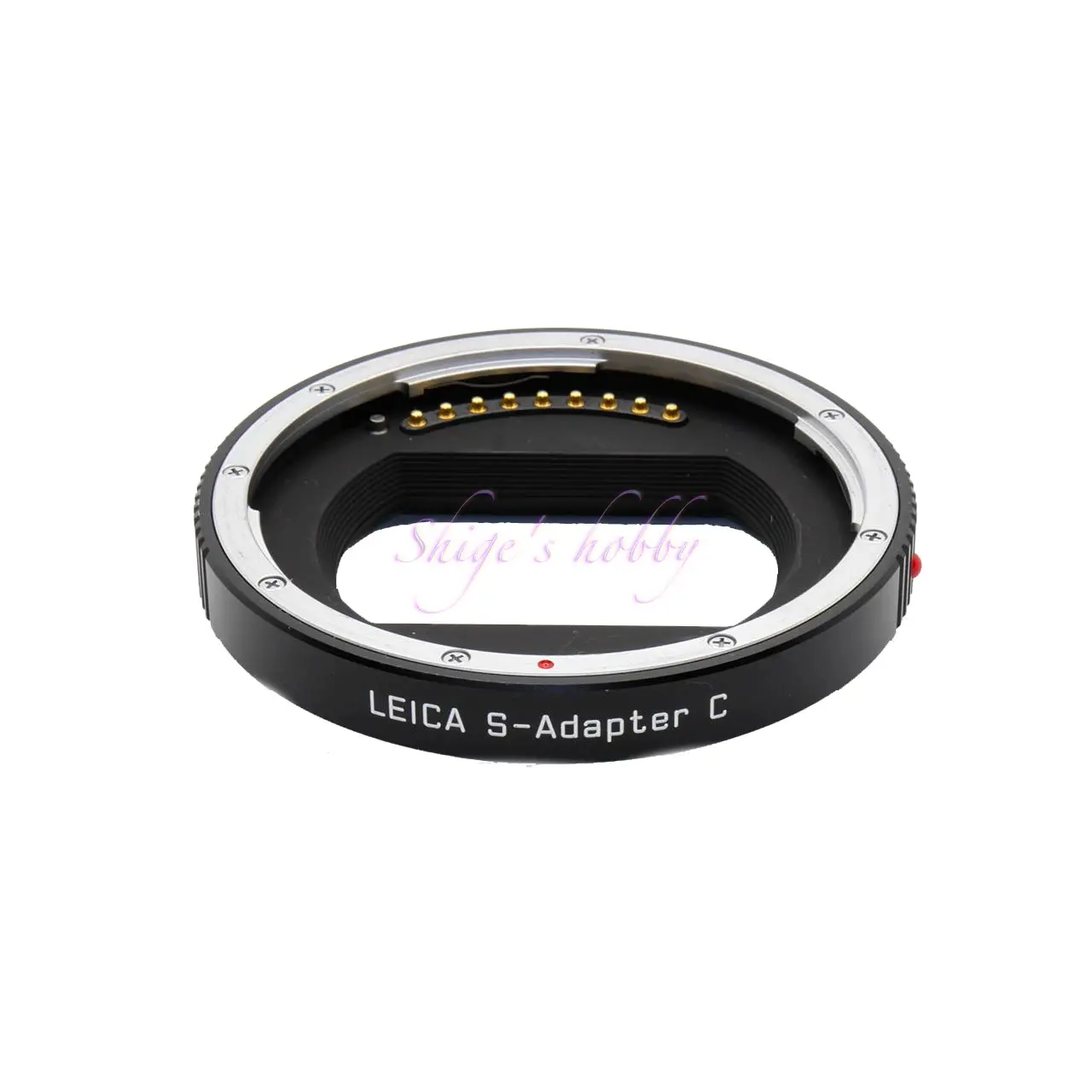
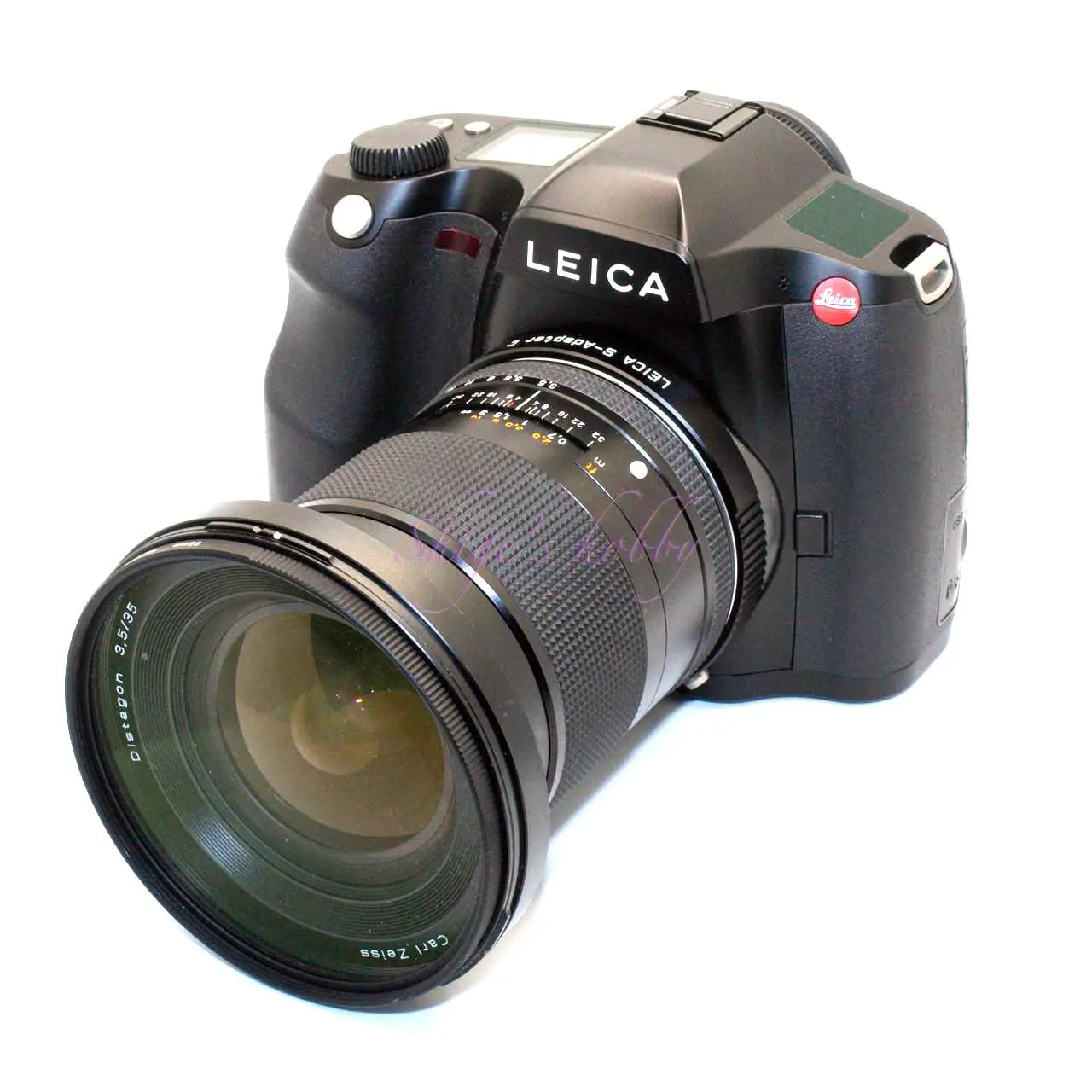
S-adapter V
The S-V mount adapter has no electrical contacts or lens shutter drive mechanism; it is simply a tube for connecting a V mount, and the feel when attached is the same regardless of the type of V mount lens. The camera’s shutter is used as the shutter.
In addition to the original S-V mount adapter, METABONES and KIPON also release them.
Lens flange focal distance = 74.9mm
| Lens name | Focal length | manufacturer | note |
| Planar | 80 | Carl Zeiss | |
| Macro Planar | 120 | Carl Zeiss/Cosina | |
| Olympia sonnar | 180 | aus jena |
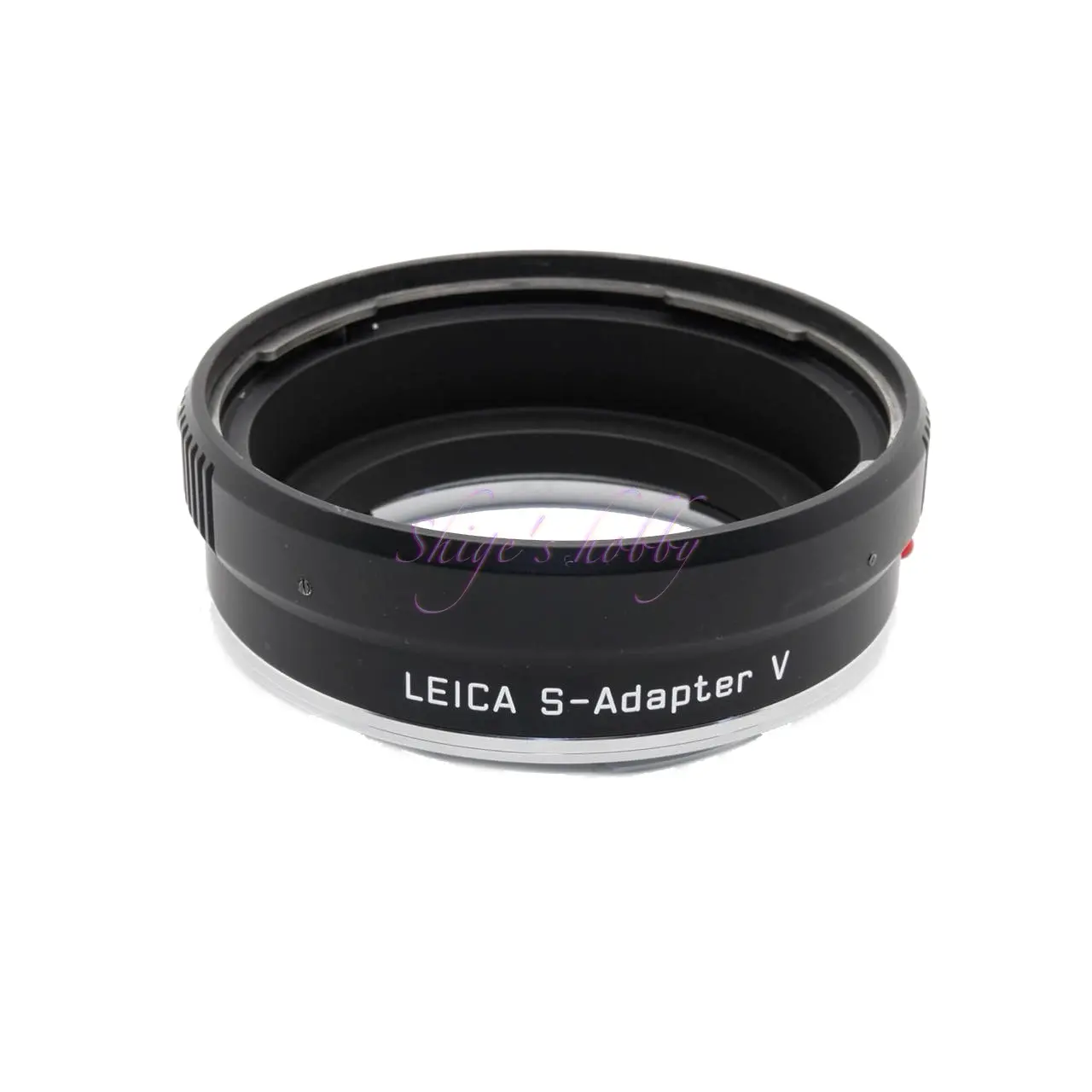
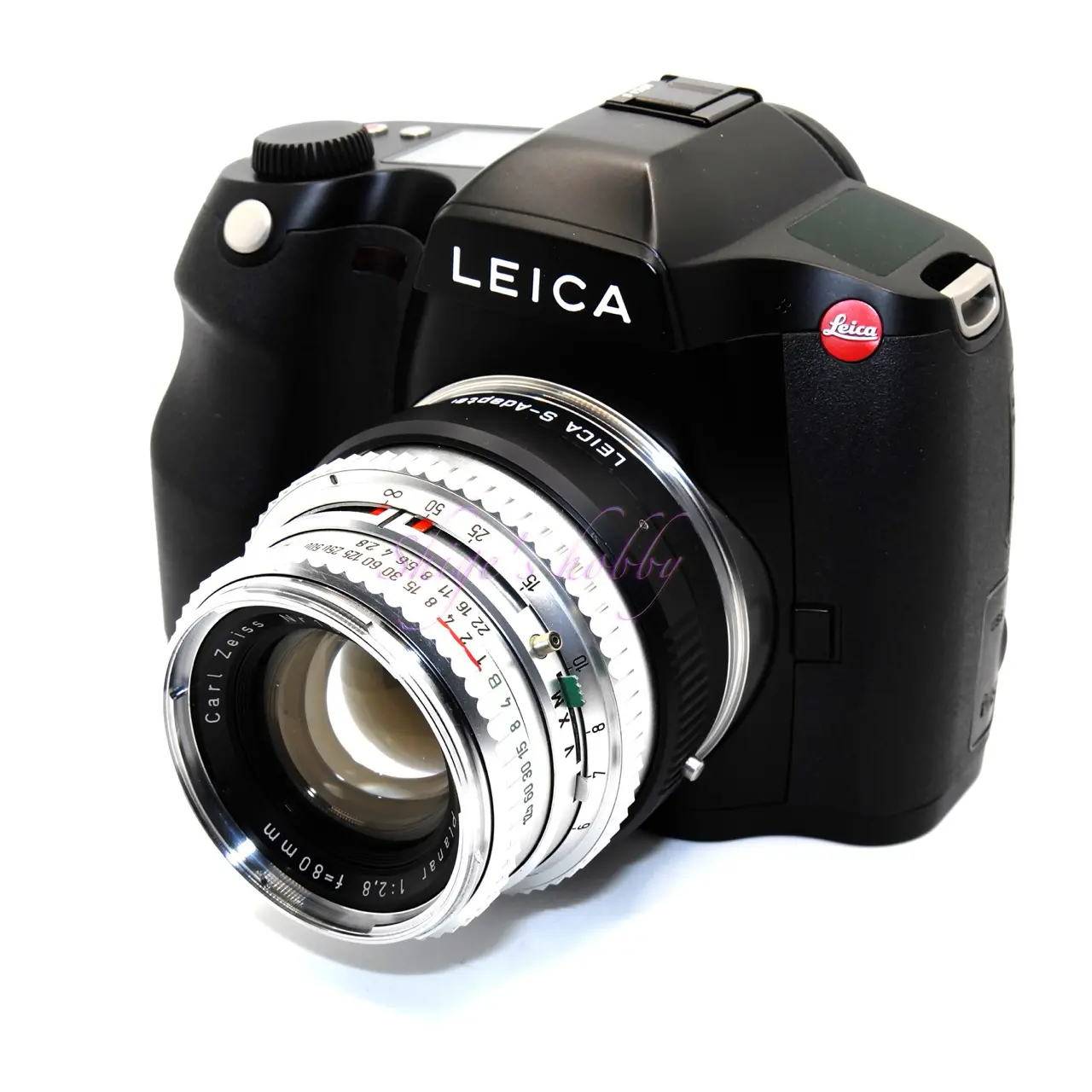
Options
| Model Number | Item name | Price | Release date | |
| 16038 | LEICA | S-Adapter C (645) | ¥240,000 | 2013/07/18 |
| 16030 | LEICA | S-Adapter H | ¥207,000 | 2012/07/02 |
| 16024 | LEICA | S-Adapter V | ¥79,000 | 2011/09/01 |
| 16025 | LEICA | S-Adapter M645 | ¥79,000 | 2011/09/01 |
| 16026 | LEICA | S-Adapter P67 | ¥79,000 | 2011/09/01 |
| Metabones | HV to L/S | ¥49,280 | ||
| Metabones | P67 to L/S | ¥49,280 | ||
| 16011 | LEICA | Professional Battery Charger S for Leica S System | ¥56,000 | 2010/03/01 |
| 16039 | LEICA | Leica S Battery BP-PRO1 | ¥22,000 | 2015/10/31 |
| 14429 | LEICA | Leica S System Battery | ¥21,000 | 2010/03/01 |
| 16032 | LEICA | EL-PRO S 180 (180mm close-up lens) | ¥130,000 | B2012/11/01 Y2013/03/15 |
| 16003 | LEICA | Multi-function hand grip for Leica S2 | ¥130,000 | 2010/03/01 |
| 16028 | LEICA | Leica S System Multifunction Hand Grip S | ¥86,500 | 2013/11/07 |
| 16000 | LEICA | Universal Screen | ¥31,500>¥50,000 | 2010/03/01 |
| 16001 | LEICA | Micro Prism Screen | ¥31,500>¥50,000 | 2011/11/29 |
| 16002 | LEICA | Grid Screen | ¥31,500>¥50,000 | 2011/02/03 |
History of medium-format digital cameras (memorandum)
Since I started using cameras with sensors larger than the 35mm full-size sensor, I will record my research on the history of digital backs before the MAMIYA ZD, starting with the MAMIYA ZD, which I am personally interested in, although PhaseOne/HASSELBLAD and others sold digital backs before the MAMIYA ZD. I will start with MAMIYA ZD, which I am personally interested in.
| Release date | Manufacturer | Model name | 2023 Brand New Price(Jp-Yen) | 2023 Used Price(Jp-Yen) | センサーサイズ |
| 2005 | MAMIYA | ZD | 25〜30 | 48*36 | |
| 2007 | HASSELBLAD | H3D | 56*36/48*36/44*33 *3 | ||
| 2009 | LEICA | S2 | 15〜60 | 45*30 | |
| 2009 | MAMIYA/Leaf*1 | 645DF | 54*40/49*37/44*33 *3 | ||
| 2010 | HASSELBLAD | H4D | 56*36/48*36/44*33 *3 | ||
| 2010 | LEICA | S2P | 15〜60 | 45*30 | |
| 2010 | PENTAX*2 | 645D | 30 | 44*33 | |
| 2012 | MAMIYA/Leaf*1 | 645DF+ | 54*40/49*37/44*33 *3 | ||
| 2014 | RICOH PENTAX | 645Z | 45 | 40 | 44*33 |
| 2014 | HASSELBLAD | H5D | 56*36/48*36/44*33 *3 | ||
| 2014 | LEICA | S typ006 | 15〜60 | 45*30 | |
| 2014 | LEICA | S-E typ006 | 15〜60 | 45*30 | |
| 2015 | LEICA | S typ007 | 250 | 50〜80 | 45*30 |
| 2015 | Phase One | XF | 54*40 *3 | ||
| 2016 | HASSELBLAD | H6D | 54*40/44*33 *3 | ||
| 2016 | HASSELBLAD | X1D | 40 | 44*33 | |
| 2017 | FUJIFILM | GFX50S | 25 | 44*33 | |
| 2018 | FUJIFILM | GFX50R | 25 | 44*33 | |
| 2019 | FUJIFILM | GFX100 | 55 | 44*33 | |
| 2019 | HASSELBLAD | X1DII | 55 | 44*33 | |
| 2020 | HASSELBLAD | X907 | 80 | 70 | 44*33 |
| 2020 | LEICA | S3 | 250 | 140〜180 | 45*30 |
| 2021 | FUJIFILM | GFX100S | 50 | 44*33 | |
| 2021 | FUJIFILM | GFX50SII | 35 | 44*33 | |
| 2022 | HASSELBLAD | X2D | 120 | 100 | 44*33 |
*2: Acquired by Ricoh in 2011
*3: Sensor size and resolution differ for each DigitalBack
Reference links
- https://maenomeri.tokyo/leicas_living_1/
- https://ichirophoto.org/category/leica/s/
- http://photo.yodobashi.com/gear/leica/camera/s/index.html
Affiliate links
- Leica R lens・Ads by ebay
- Leica M lens・Ads by ebay
- Leica TL・Ads by ebay
- Leica SL・Ads by ebay

Amazon Prime Sale
Update history
- 2025.9.3
- 2023.07.2:Add LEICA S lenes informations
- 2023.6.18:Add CONTAX 645 lens links
- 2023.5.3
- 2023.4.27
- 2023.4.23


Be First to Comment